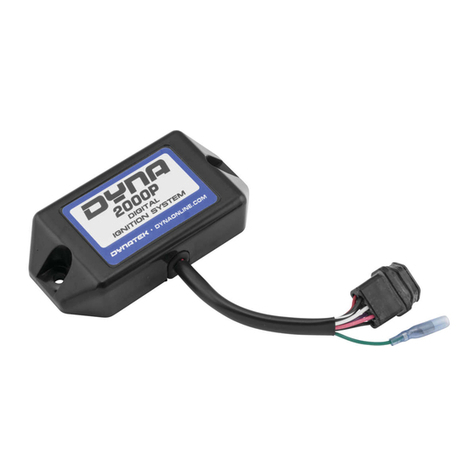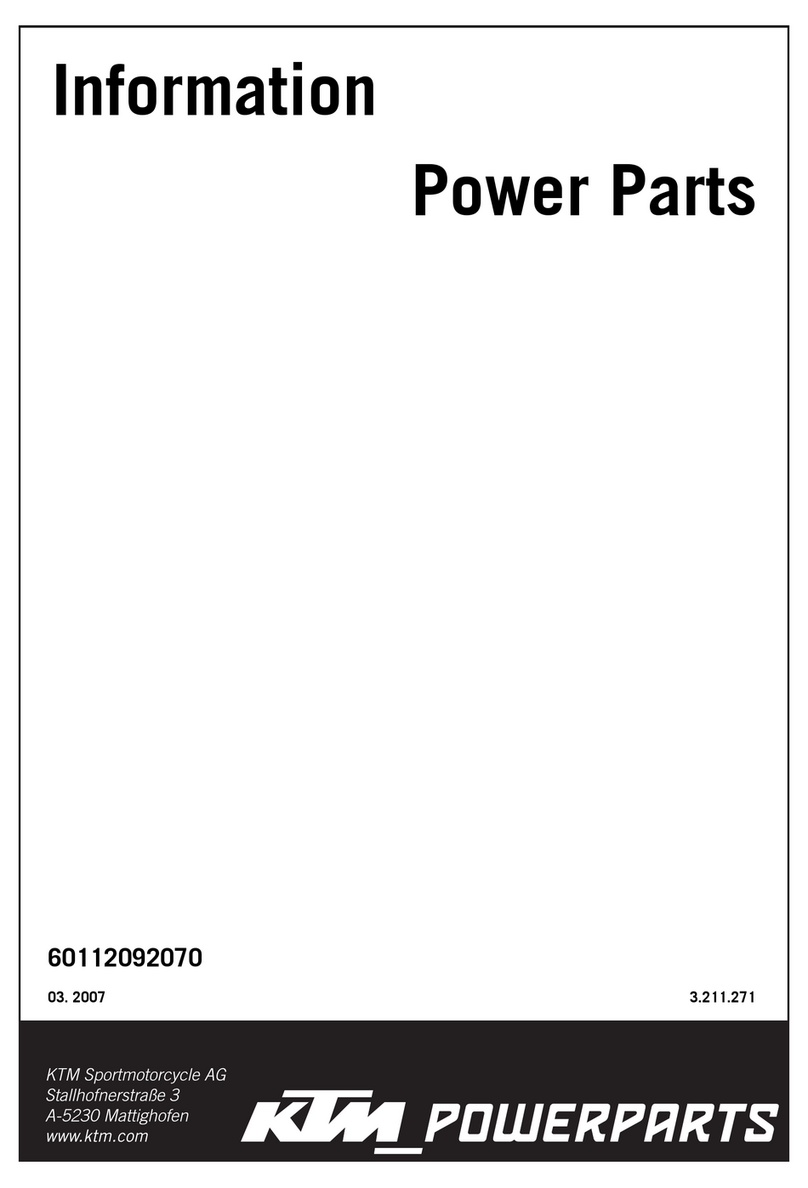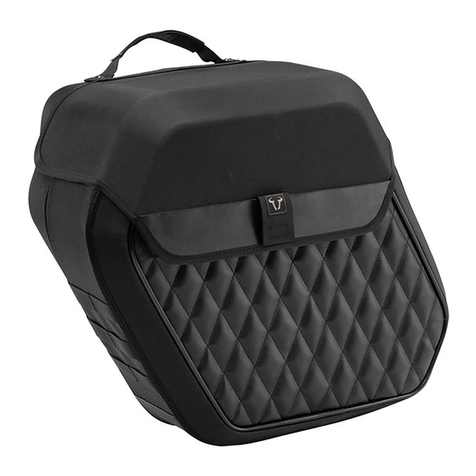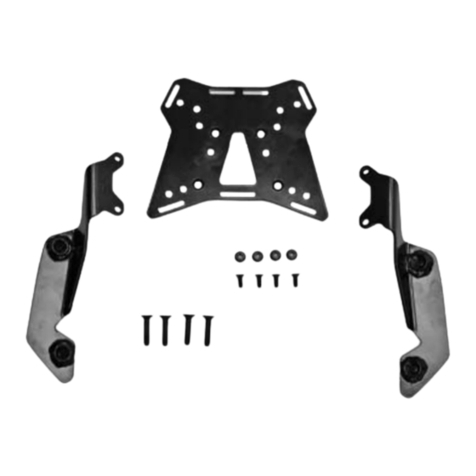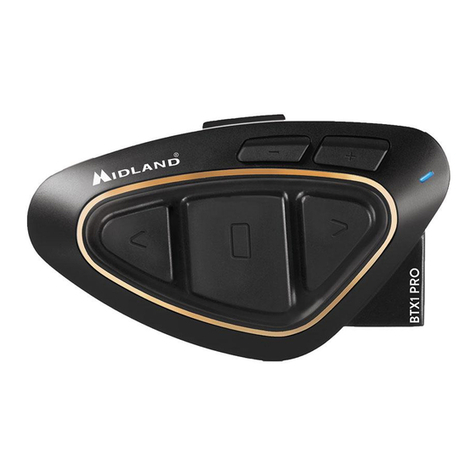RHINO LARGE VIEW User manual

I
INSTRUCTION MANUAL
RHINO
Auto-Darkening “LARGE VIEW” Welding Helmet

II 1
The lens of the Rhino “Large View” Welding Helmet typically has double the view-
ing area of a standard helmet. As a result of the increased size, more care needs to
be taken with the helmet because the lens is a LCD made of glass, similar to many
television and cell phone screens manufactured today. If the helmet is acciden-
tally dropped onto a hard surface or smashed, the lens can crack or shatter .
Place the helmet in a bag or box after use. Ambient lighting in a shop, garage, or
workplace can activate the lens, but not provide enough solar energy for power,
which will employ the batteries to keep the lens activated. Over a long period of
time this can drain the batteries. Storage in a bag or box will eliminate this pos-
sibility. Replacement CR2025 batteries are available at a very low cost from most
stores and online. Instructions for battery installation are pictured and described
later in this manual.
If you would like to test your helmet before use, then please do the following:
1. Turn the lens sensitivity to “MAX”
2. Position the helmet with the lens facing a light bulb with a minimum of
60-Watts. To insure an accurate test, the helmet must be within 12 inches of the
light bulb. Equivalent and brighter light sources can be substituted.
3. If the lens does not darken, check/replace the (2) CR2025 batteries and retest.
1.2 Customer Care & Warranty Inquiries - Welding Helmets Direct
Please check your helmet and lens for any damage that may have occurred during
shipping and notify us immediately. If you experience any problems, we are here
to help. Helmets carry a 2-year warranty. Warranty inquiries are handled by our
customer care department.
Customer Care Department:
customercare@weldinghelmetsdirect.com
Welding Helmets Direct
PO Box 8628
Bend, OR 97708
Phone: (541) 749-0903 Toll Free: (855) 207-9865
1.1 Important Information
Section 1 - Required Reading - Important Points and Safety
Table of Contents & Common Troubleshooting.......................................
Section 1 - Required Reading - Important Points and Safety..............
Section 2 - Headgear Assembly Components and Installation...........
Section 3 - Adjusting Headgear......................................................................
Section 4 - Lens Cover Replacement.............................................................
Section 5 - Variable Shade, Sensitivity, and Delay Adjustment............
Section 6 - Battery Replacement....................................................................
Below
1-2
3-5
6
7
8-9
10
Problem Solution
Auto-darkening lens stays
in light state when welding,
does not darken.
STOP WELDING! Adjust lens sensitivity to higher setting.
Change exterior lens cover if it is dirty or damaged. Make
sure there are no obstructions between arc and sensors,
extreme angles will obstruct the arc from sensors. Possible
dead batteries, replace with two CR2025 lithium batteries.
Auto-darkening lens stays in
dark state after the welding
arc is gone or the lens stays
dark when no welding arc is
present.
Adjust the sensitivity setting lower with small changes,
gradually moving it towards low. In some light conditions
where lots of ambient light exists, reduction of ambient light
may be necessary with barriers or other blocking devices.
Areas of the auto-darkening
lens are not darkening; lines
separate light and dark areas
of the lens.
STOP WELDING! The auto-darkening lens may contain a
crack, which can be caused from the impact of the helmet
being dropped or smashed. Weld spatter on the lens can
also cause a crack. The lens needs to be replaced; this is not
covered under warranty in most cases, email customer care
at customercare@weldinghelmetsdirect.com to nd out how
we can help you.
Auto-darkening lens is
ickering when welding arc is
present.
Adjust the sensitivity setting to a higher level. Change exte-
rior lens cover if it is dirty or damaged. Make sure there are
no obstructions between arc and sensors, extreme angles
will obstruct the arc from sensors. Reduce the delay setting
to minimum.
Variable lighter auto-dark-
ening lens shading in the
dark state, noticeable on the
outside edges and corners
of lens.
Called “angle of view eect,” auto-darkening lenses have an
optimum viewing angle of operation. That angle is per-
pendicular to the surface of the lens or 90 degrees. This is a
normal behavior of the lens and does not reveal a health or
safety hazard. Cheater lenses or magnifying lenses enable
this eect to become more noticeable.

2 3
Headgear Assembly Hardware Components:
#1 - Headgear Bolt
#2 - Angle Adjustment Lever
#3 - Interior Headgear Fitting
#4 - Exterior Headgear Fitting
#5 - Headgear Knob
Headgear installation should be completed one side at a time. The headgear as-
sembly components involved in the process are named, numbered, and pictured
above. Names and numbers will stay consistent throughout the installation.
Please Note: Some steps of the installation may already be complete at the time of
purchase. For example, the “Interior Headgear Fitting” and the “Exterior Headgear
Fitting,” #3 and #4 may be pre-installed, in which case Step 2 and Step 3 can be
skipped.
2.1 Headgear Assembly Components
Section 2 - Headgear Assembly Components and Installation
1.2 Safety Precautions - Hazards of Arc Welding
Do not weld in the overhead position with this helmet. Damage to the helmet and/or lens
resulting from overhead welding is NOT covered under warranty.
Only qualied users should install, operate, maintain, and repair this unit. Perform maintenance
and service according to the owner’s manual, industry standards, nation, state, and local codes.
Arc rays from welding processes produce both intense visible and invisible (ultraviolet and infra-
red) rays that can burn both eyes and skin. In addition, sparks can y o from the weld.
Users must wear a welding helmet tted with a proper shade of lter to protect the face and
eyes when welding or watching. Users must wear approved safety glasses with side shields
under the helmet. Use protective screens or barriers to protect others from ash, glare, and
sparks; warn others in the area not to watch the arc without proper protection. Wear protective
clothing made from durable, ame-resistant material and foot protection. Welding helmets DO
NOT provide unlimited eye, ear, and face protection. Do not use this helmet while working with
or around explosives or corrosive liquids. Inspect the auto-darkening lens frequently. Immedi-
ately replace any scratched, cracked, or pitted lens covers or lenses.
Noise from some processes or equipment can damage hearing. Wear approved ear protection
in areas where noise levels are high. Welding processes produce fumes and gases. Breathing
these fumes and gases can be hazardous to your health. When inside, ventilate the area and/or
use local forced ventilation at the arc to remove welding fumes and gases. When ventilation is
poor, wear an approved air-supplied respirator. Read and understand the Material Safety Data
Sheets(MSDSs) and the manufacturer’s instructions for metals, consumables, coatings, cleaners,
and degreasers. Work in a conned space only when it is well ventilated or while wearing an
air-supplied respirator. Always have a trained watchperson nearby. Welding fumes and gases
can displace air and lower the oxygen level causing injury or death. Make sure the breathing air
is safe in your working area.
Do not weld in locations near degreasing, cleaning, or spraying operations. The heat and rays of
the arc can react with vapors to form highly toxic and irritating gasses. Do not weld on coated
metals, such as galvanized, lead, or cadmium plated steel, unless the coating is removed from
the weld area, the area is well ventilated, and while wearing an air-supplied respirator. The coat-
ings and any metals containing these elements can give o toxic fumes if welded.
Selected various hazards are described above. Welding processes and/or workplaces may in-
volve hazards other than those described in this manual. This manual is not intended to be, nor
should be interpreted as, complete with regard to welding and/or workplace safety.
PROPOSITION 65 WARNINGS
Welding or cutting equipment produces fumes or gases which contain chemicals known
to the State of California to cause birth defects and, in some cases, cancer. (California
Health & Safety Code Section 25249.5 et seq.)
This product contains chemicals, including lead, known to the state of California to cause
cancer, birth defects, or other reproductive harm. Wash hands after use.

4 5
2.2 Headgear Assembly Installation (continued)
Step 4
Set the “Angle Adjustment
Lever,” #2 to the desired
angle setting. Then, set the
“Headgear Bolt,” #1 into the
desired distance setting.
This illustration shows the
neutral setting. Both sides
of the headgear MUST be on
the same setting for proper
operation of the helmet.
Step 5
Attach the headgear as-
sembly to the helmet by
reinserting the “Head-
gear Bolt,” #1 through
the hole created by
Step 3.
The “Angle Adjustment
Lever,” #2 will t into
the “Interior Headgear
Fitting,” #3.
Complete installation by
screwing the “Headgear
Knob,” #5 onto the end
of the “Headgear Bolt,”
#1.
Step 3 (Not Pictured)
Insert the “Exterior Headgear Fitting,” #4 into the round hole on the
exterior of the helmet that was created in Step 2.
2.2 Headgear Assembly Installation
Insert the “Interior Headgear Fitting,” #3 into the inside of the hel-
met. This round piece has a square outlay with notch that snaps
into a corresponding square hole with notch inside the helmet.
Step 1
Unscrew and remove the
“Headgear Knob,” “Exterior
Headgear Fitting,” and “Interior
Headgear Fitting,” #5, #4, and #3
from one side of the headgear
assembly.
Only #3, the “Interior Headgear
Fitting” is needed in Step 2.
Step 2

6 7
4.1 Exterior and Interior Lens Cover Replacement
The exterior lens
cover holder can
be removed by
sliding it o the
helmet.
Hand #1, place the
thumb and middle
nger on the bot-
tom corners of the
lens cover holder.
Hand #2, place
the base of the
palm on top of the
helmet and posi-
tion the ngers on
the upper inside
edge of the lens
cover holder. Then
in one motion,
slide the lens cover
holder towards the
top of the helmet.
Do not push down
on the lens or solar
panel.
The interior lens cover
can be removed by
prying it out using the
opening noted (#1) in
the illustration.
Replace the lens cover
making sure it is at
when reinstalled to
prevent fogging.
Section 4 - Lens Cover Replacement
1. Over The Top Head-
gear Adjustment
Adjusts height on head for balance
and stability.
2. Headgear SnugFit
Adjustment
Adjusts headgear for a tight t.
Push in knob on the back of the
headband and turn left or right to
obtain desired setting.
Section 3 - Adjusting Headgear
3. Angle Adjustment
Five pins on both sides of the headgear provide dierent settings
for the forward tilt feature of the helmet. To change, loosen the
headgear knob on each side and change the angle adjustment
lever to the desired setting. Retighten headgear knobs.
4. Distance Adjustment
Allows the user to change the distance between the face and the
lens. Simply loosen both headgear knobs and press inward to free
from slots. Move forward or back to desired position and retighten.
Both sides must be in same position for correct operation.

8 9
5.2 Sensitivity and Delay Adjustment
Section 5 - Variable Shade, Sensitivity, and Delay Adjustment
Lens Delay Adjustment (#2)
The lens delay adjustment is used to
control how fast the lens switches
back to the light state after welding.
The delay is very helpful in higher
amperage applications where the
molten puddle remains bright
momentarily after welding. Adjusts
from Minimum 0.3 seconds to Maxi-
mum of 0.8 seconds.
Recommended Sensitivity Settings
Stick Electrode MAX
Short Circuiting MIG Midway between MIN & MAX
Pulsed and Spray MIG MAX
Gas Tungsten Arc TIG MAX
Plasma Arc Cutting/Welding Midway between MIN & MAX
Sensitivity Adjustment (#1)
The sensitivity adjustment will
make the lens more or less
responsive to dierent welding
processes.
It may be necessary to
adjust sensitivity based
on dierent light con-
ditions or if the lens is
ashing/ickering.
How to adjust sensitivity for dierent work-
place light conditions:
1. Turn sensitivity control to “MAX” setting.
2. Face the helmet towards surrounding work light
conditions. If the lens does not darken, you are
ready to weld. If the lens does darken, then move
on to step 3.
3. Gradually turn sensitivity setting lower until the
lens is no longer darkened by the work lighting,
you are ready to weld.
5.1 Variable Shade Knob
Use the control knob on the outside of the helmet to
adjust the lens shade in the dark state. Use the table
below to select the proper shade control setting based
on your welding process. Start at shade 13 and adjust
lighter to suit the welding application and your personal
preference. The knob should rotate easily.
Welding Type Arc Current
(Amps)
Shade Number
Stick Electrodes Less than 40
40-80
80-175
175-300
300-500
9
10
11
12
13
MIG
Metal Inert Gas Welding
Less than 100
100-175
175-300
300-500
10
11
12
13
TIG
Gas Tungsten Arc Welding
Less than 50
50 -100
100-200
200-400
10
11
12
13
Air Carbon Less than 500
500-700
12
13
Plasma Arc Cutting 60 -150
150-250
250-400
11
12
13
Plasma Arc Welding Less than 50
50-200
200-400
9
10
11-12
Section 5 - Variable Shade, Sensitivity, and Delay Adjustment
WARNING:
If the sensitivity setting is
too low, then the lens will
not activate/darken or may
icker/ash during welding.
Stop welding immediately
and increase the sensitivity.

10
6.1 Battery Replacement
This helmet uses two CR2025
Lithium Batteries. They can be
replaced as shown in the pictures,
note the positive and negative
charge directions below.
Place the helmet in a bag or box
after use. The helmet primarily
uses solar energy and features two
CR2025 lithium batteries. Welding
produces more than enough solar
energy to activate and power the
lens. However, ambient lighting in
a shop, garage, or workplace can
activate the lens and not provide
enough solar energy for power,
which will employ the batteries
to keep the lens activated. Over a
long period of time this can drain
the batteries. Storage in a bag or
box will eliminate this possibility.
Replacement CR2025 batteries are
available at a very low cost from
most stores and online.
Section 6 - Battery Replacement
CR2025 Lithium Batteries (2)
Table of contents
Popular Motorcycle Accessories manuals by other brands

Scorpio
Scorpio Ride secure installation manual
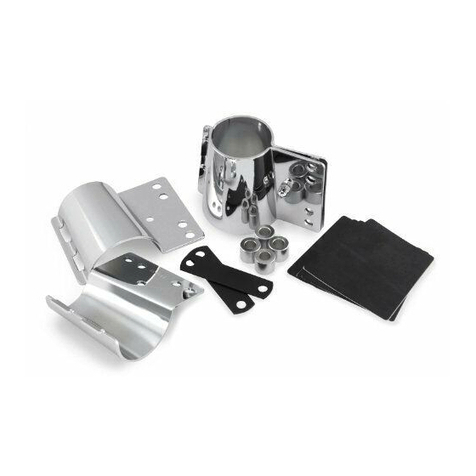
National Cycle
National Cycle JE Installation and owner's manual
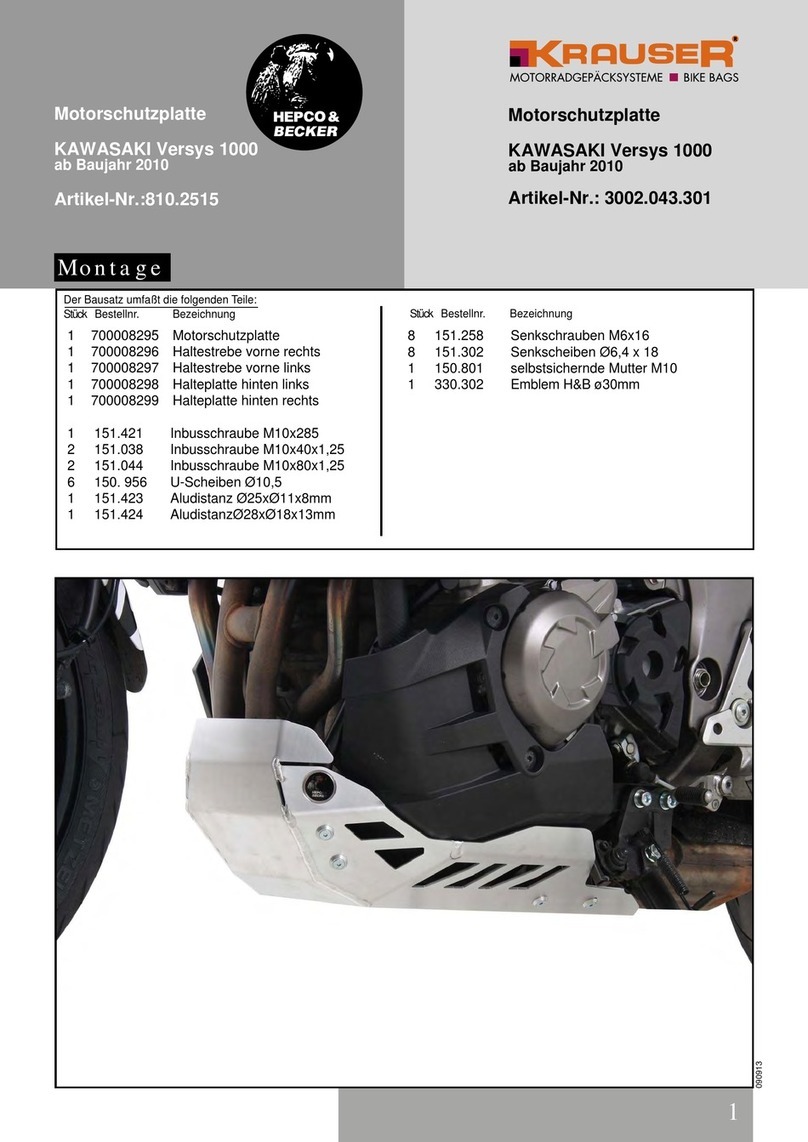
hepco & becker
hepco & becker 810.2515 manual
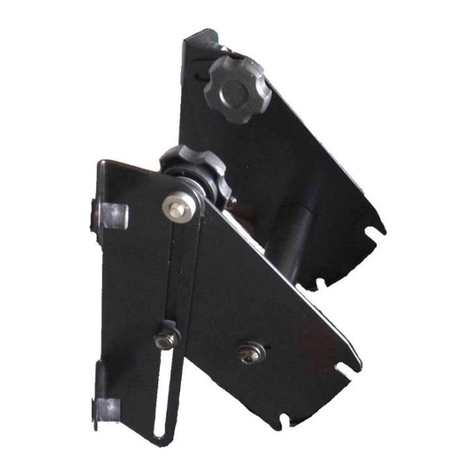
MadStad Engineering
MadStad Engineering Robo Knob Brackets manual
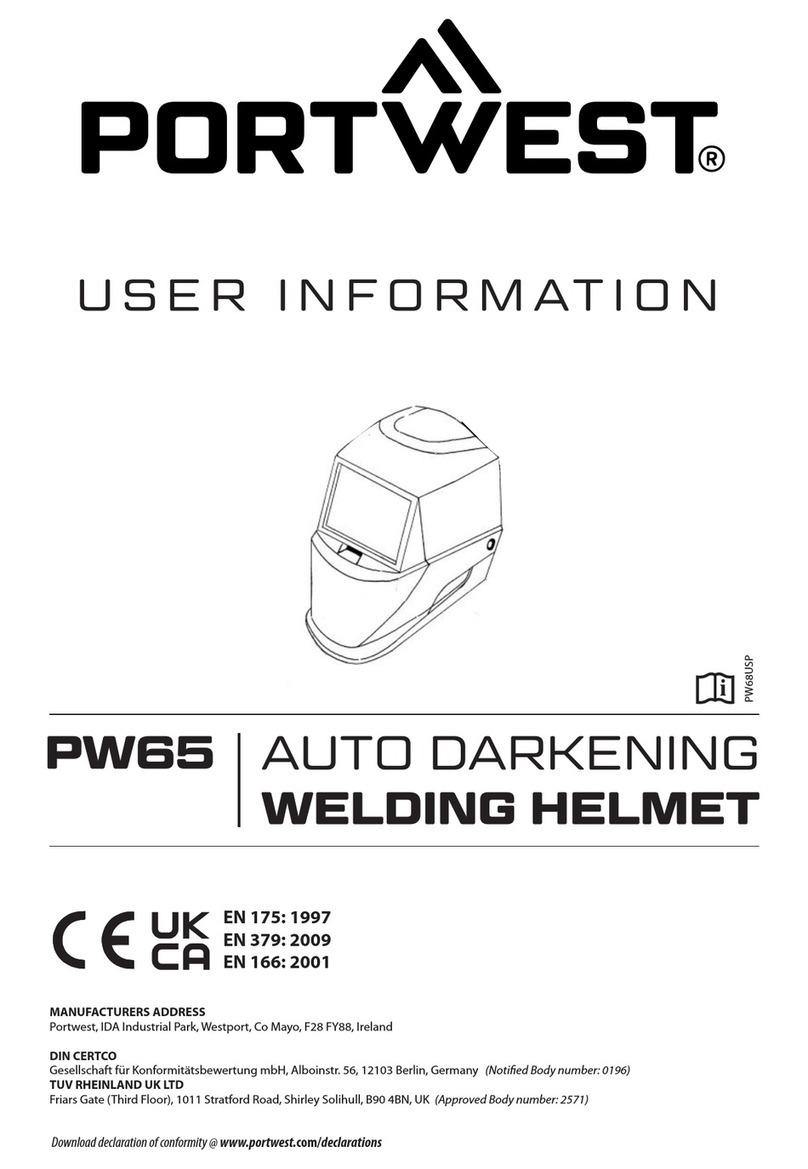
PORTWEST
PORTWEST PW65 User information
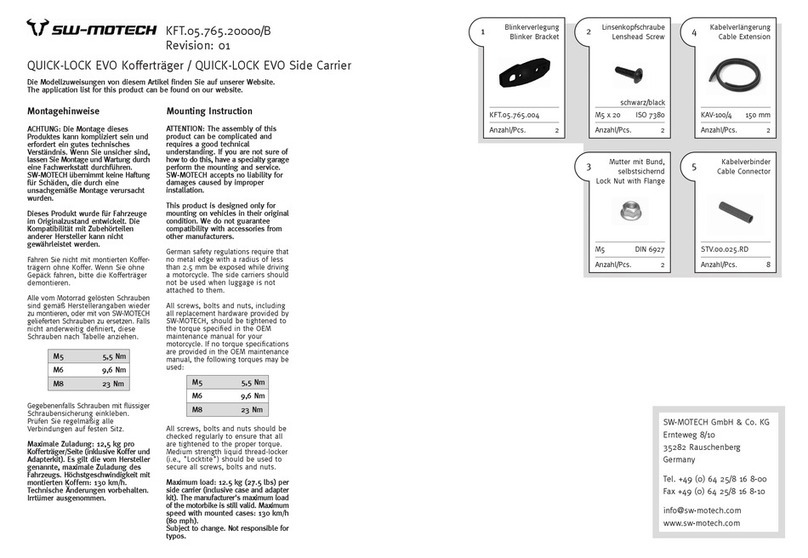
SW-Motech
SW-Motech QUICK-LOCK EVO Mouting Instructions

Toparc
Toparc LCD 11 user manual
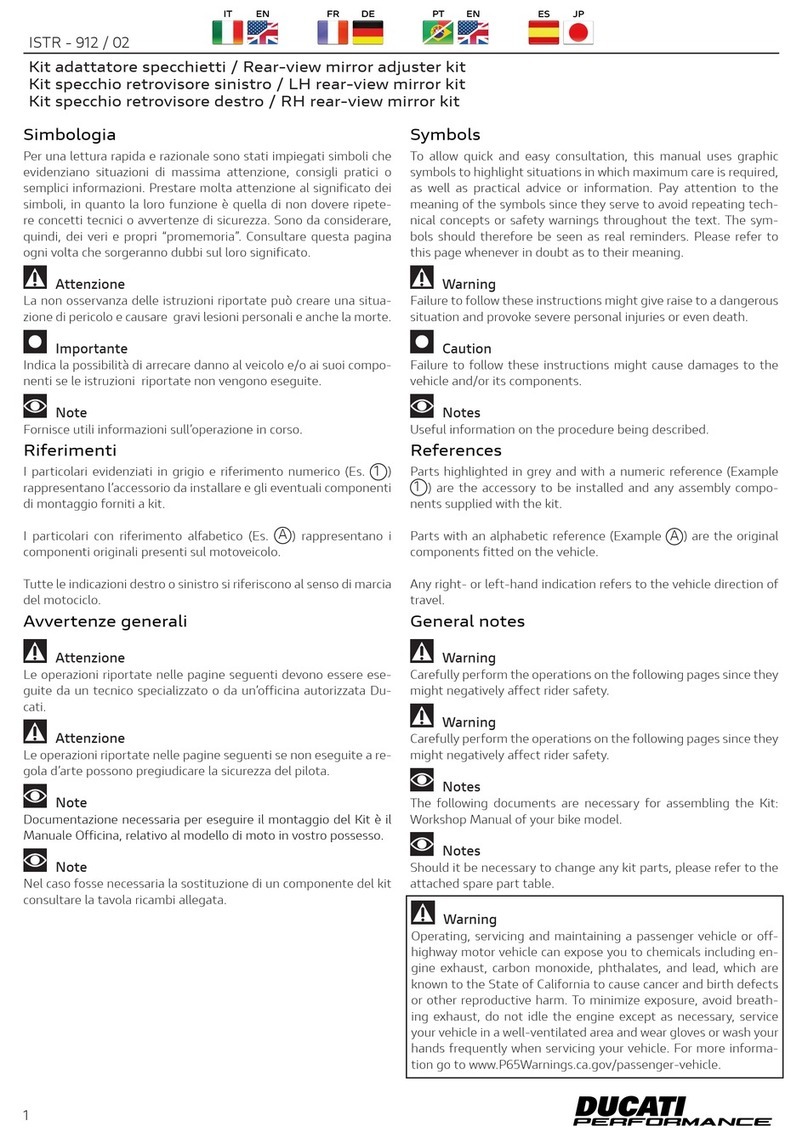
DUCATI Performance
DUCATI Performance 96880541AA installation instructions
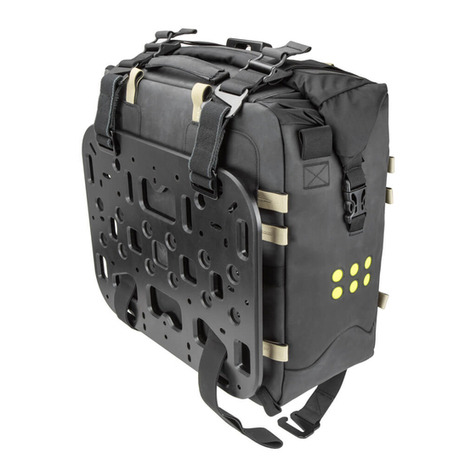
Kriega
Kriega OS-32 Fitting instructions
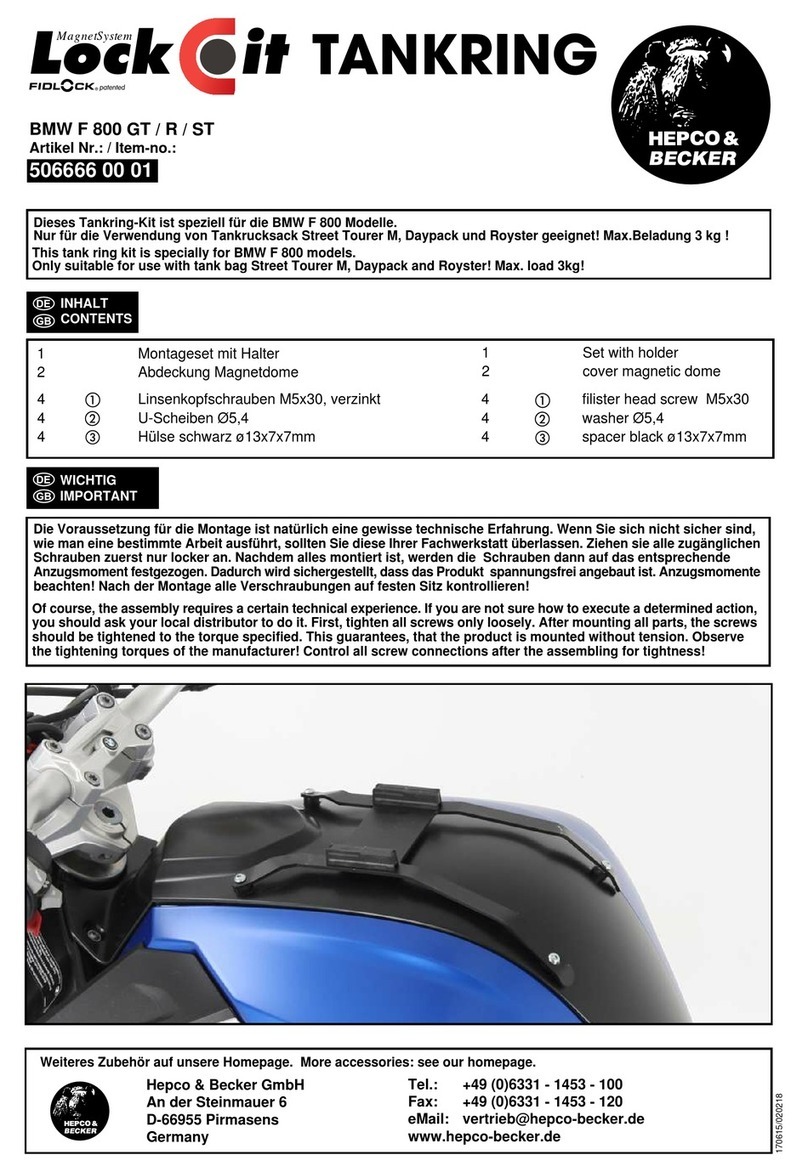
hepco & becker
hepco & becker 5066660001 Mounting instructions
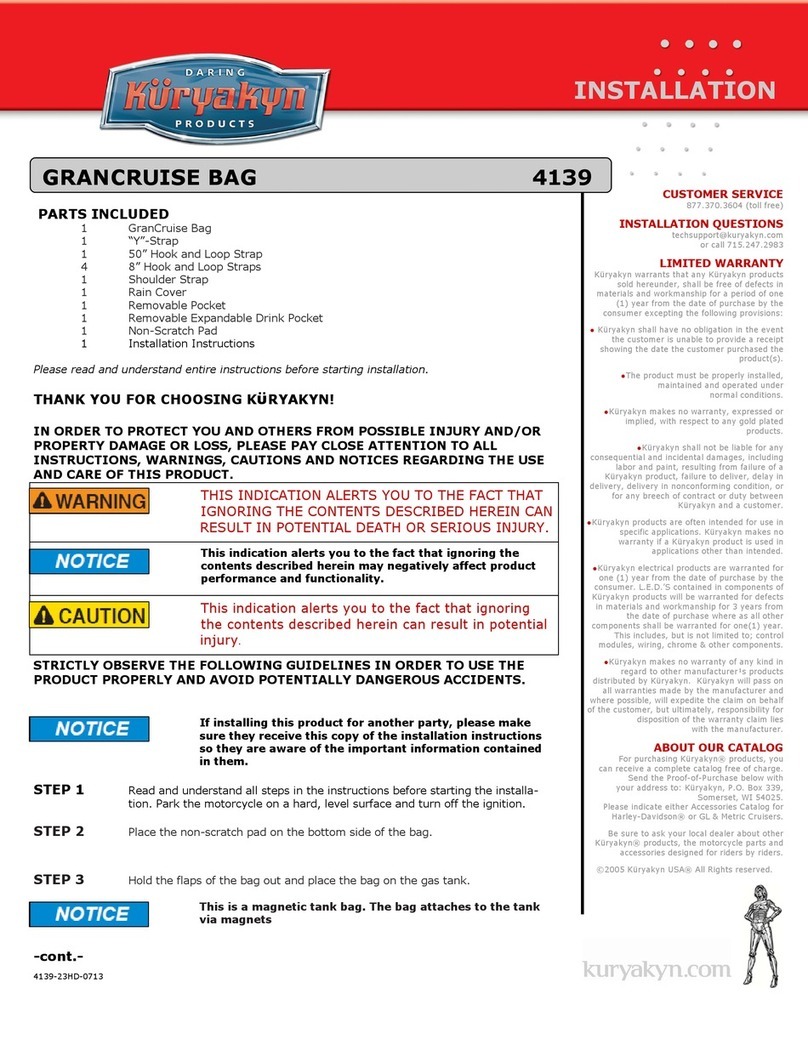
Kuryakyn
Kuryakyn 4139 Installation

hepco & becker
hepco & becker Sportrack 6709524 00 01 quick start guide
